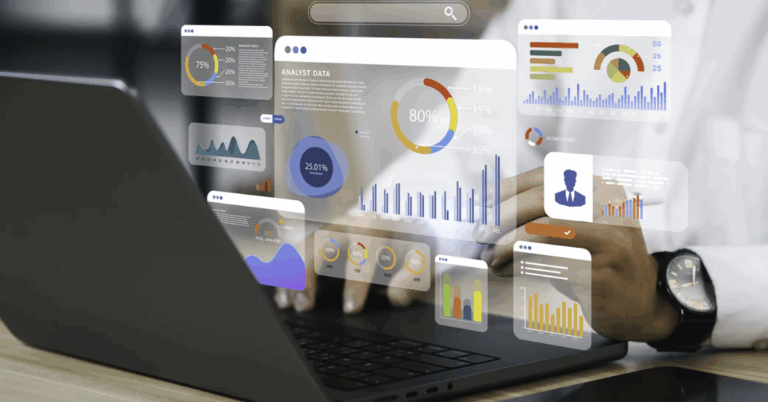CRM for the Education Industry: Transforming How Institutions Engage and Manage Relationships
In the modern educational landscape, managing relationships with students, faculty, staff, and alumni has become more complex than ever before. Traditional methods of managing these relationships are no longer sufficient in a world that demands efficiency, personalization, and scalability. This is where Customer Relationship Management (CRM) systems come into play. In the CRM For Education Industry serve as powerful tools that streamline processes, enhance communication, and improve overall engagement.
In this article, we will explore the benefits of CRM for the education industry, its key features, and how it can help institutions enhance their operations and build stronger relationships with their stakeholders.
What is CRM in the Education Industry?
Customer Relationship Management (CRM) refers to a technology platform that helps organizations manage interactions with current and potential customers. In the case of the education sector, the “customers” are students, prospective applicants, faculty members, staff, alumni, and even parents. The CRM helps educational institutions track, manage, and optimize their relationships with these groups to drive growth and improve experiences.
For educational institutions, a CRM is not just a tool for sales and marketing; it’s a complete system that helps with student recruitment, admissions, retention, communication, and even alumni engagement. The key to success with CRM in the education industry lies in how it centralizes data and integrates with existing systems to provide a comprehensive view of each individual or group.
Key Benefits of CRM for the Education Industry
1. Streamlined Admissions Process
For many educational institutions, managing the admissions process can be time-consuming and prone to errors. A CRM system allows for the automation of tasks such as tracking applications, scheduling interviews, and sending out communications. With CRM, universities and schools can manage leads, applications, and enrollment more efficiently, ensuring that no opportunity slips through the cracks. CRM systems can also help with nurturing prospective students, sending them personalized information, and guiding them through the admissions journey.
2. Improved Student Retention
Student retention is a major challenge in the education industry. A CRM system helps institutions proactively manage student relationships by identifying at-risk students based on engagement metrics, academic performance, and personal milestones. By tracking and analyzing these factors, institutions can intervene early to provide support and guidance to students who may need it. This targeted approach helps improve student satisfaction and retention rates.
3. Enhanced Communication
Effective communication is key to success in the education sector. With a CRM system, institutions can create automated workflows for communication, such as welcome emails, event invitations, and reminders for important deadlines. These communications can be personalized to ensure that students, parents, and faculty receive the right message at the right time. Additionally, CRM systems often include omnichannel communication tools, allowing institutions to engage with stakeholders via email, text messages, social media, and even phone calls—all within one platform.
4. Data-Driven Insights
A CRM system for the education industry allows institutions to collect and analyze data about student behavior, engagement, and academic progress. This data is invaluable in making informed decisions that can improve the student experience. For example, universities can track trends in student inquiries, monitor the effectiveness of marketing campaigns, and identify areas where students may need additional support. These insights can guide strategic planning and help institutions improve their offerings over time.
5. Alumni Engagement
Alumni are an essential part of an educational institution’s community. A CRM system can help universities stay connected with their alumni by organizing alumni events, tracking donations, and creating personalized communication for alumni engagement. By maintaining an active relationship with alumni, universities can generate support for scholarships, networking opportunities, and other initiatives that benefit both current students and graduates.
6. Improved Faculty and Staff Collaboration
A CRM system is not just beneficial for student engagement; it can also improve internal collaboration among faculty and staff. By centralizing data in one platform, teams across different departments—such as admissions, student services, and alumni relations—can work more effectively together. Staff members can access real-time information, ensuring that everyone is aligned and has access to the most up-to-date details.
Features of a CRM System for Education
1. Student Lifecycle Management
A CRM system for the education industry should cover the entire student lifecycle, from recruitment to alumni relations. By managing all stages of the student journey, a CRM ensures that institutions can provide a personalized experience and meet the specific needs of students as they progress through their education.
2. Marketing Automation
Marketing automation is a powerful feature of CRM systems that helps educational institutions nurture leads and prospects. By automating the process of sending targeted messages, such as email campaigns and reminders, institutions can maintain continuous engagement with prospective students. Personalized messages based on past behavior or preferences help create a more tailored experience, which increases the likelihood of conversion.
3. Reporting and Analytics
CRM systems for education come with built-in analytics and reporting tools that track key performance metrics. These tools allow institutions to measure the effectiveness of various campaigns, track student engagement, and identify trends in student behavior. With this data, institutions can make data-driven decisions to improve student outcomes and optimize their operations.
4. Event Management
Educational institutions often organize a variety of events, such as open houses, webinars, and graduation ceremonies. A CRM system can simplify the process of event planning and management by automating registration, sending reminders, and tracking attendee participation. This ensures that events run smoothly and that communication with attendees is streamlined.
5. Integration with Other Systems
For educational institutions, it’s crucial that the CRM integrates seamlessly with existing systems, such as student information systems (SIS), learning management systems (LMS), and email marketing platforms. Integration helps ensure that data flows smoothly between different departments and systems, eliminating the need for manual data entry and reducing the risk of errors.
6. Mobile Accessibility
A CRM system with mobile access allows faculty, staff, and even students to access information on the go. Mobile CRM apps provide flexibility for those who need to interact with the system outside of the office or classroom. This feature is especially useful for university staff who are always on the move or need to respond to student queries quickly.
How CRM Improves the Recruitment Process
One of the most significant benefits of CRM in education is its ability to streamline the recruitment process. By managing prospective student leads and tracking their progress through the application process, institutions can ensure that no potential student is overlooked. A CRM system helps universities segment prospects based on factors such as program interest, location, and engagement history, enabling institutions to tailor their outreach efforts. With automated email marketing, follow-up reminders, and personalized communication, a CRM ensures that prospects receive relevant and timely information, increasing the likelihood of a successful enrollment.
Challenges of Implementing CRM in the Education Industry
While CRM systems offer significant benefits to educational institutions, their implementation comes with challenges. The complexity of integrating a new system with existing platforms and workflows can be daunting. Institutions must invest in training staff to use the system effectively, which can be time-consuming. Additionally, ensuring data security and compliance with regulations like GDPR or FERPA is critical, as educational institutions handle sensitive student information.
Conclusion
CRM systems are transforming how educational institutions interact with students, faculty, staff, and alumni. By centralizing data, automating communication, and providing valuable insights, a CRM system helps universities streamline operations and improve the overall experience for everyone involved. Whether it’s managing admissions, retaining students, or engaging with alumni, CRM systems are essential tools for educational institutions looking to thrive in an increasingly competitive environment. By adopting a CRM, educational institutions can build stronger relationships, drive better outcomes, and foster growth for the future.







